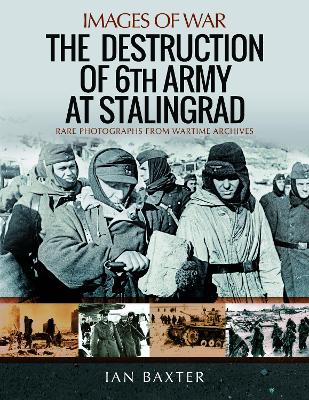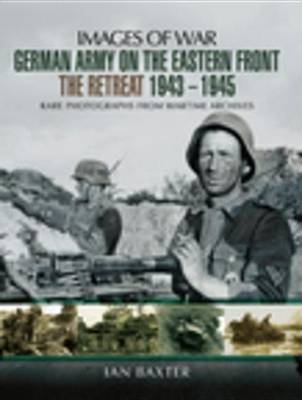Images of War
50 total works
The annihilation of General von Paulus' 6th Army epitomised the devastating defeat of Hitler's ambition to conquer Stalin's Soviet Union. After the successful Operation Blue offensive 6th Army reached the River Volga north of Stalingrad in summer 1942\. With over-extended supply lines and facing steely opposition, increasingly desperate attempts to seize the city repeatedly failed. Slowly 6th Army became encircled. The German High Command attempted a number of relief attempts, notably Field Marshal von Manstein's Winter Storm' but all were defeated by the tenacity of the enemy and the Russian winter. To their credit the men of 6th Army fought to the end but by February 1943 the last pockets of German resistance were either destroyed or had surrendered.
Thanks to a superb collection of unpublished photographs, this Images of War book provides an absorbing insight into the dramatic events of the last months of 6th Army's doomed existence.
Those German forces that were fortunate enough to survive the overwhelming ferocity of the enemy onslaught, gradually streamed back to fight on home soil until they were either destroyed or were driven around a devastated Berlin.
In addition to the Tiger I and successor Tiger II heavy tanks, these battalions were equipped with Pz.Kpfw III's, Flakpanzer IV, Sd. Kfz 7/1 self-propelled anti-aircraft guns, Sd.Kfz 9 and 10 halftracks, Sd.Kfz 2 and Kettenkrad gun tractors. The Tigers required substantial maintenance and the Berge Panther armoured recovery vehicle played a key role.
Heavy tank battalions saw action on the Eastern Front, in Italy and North West Europe before being pushed back to Berlin for the final defensive battles and there are graphic photographs and descriptions of vehicles on operations in all these theatres.
While feared by the Allies in the early years, these units suffered increasing attrition from anti-tank artillery, ground attack aircraft and mechanical issues.
Modellers and equipment buffs in particular will find this latest Images of War book extremely useful and fascinating.
On 20 April, Hitler's 56th birthday, Soviet artillery began a massive bombardment of the doomed city. The Fuhrer ordered every soldier, Hitlerjugend and Volksstrum to fight to the death. The house-to-house fighting that followed was brutal and savage with heavy casualties for both military and civilians.
Using superb Russian and German imagery this fine Images of War series book describes the Russian assault and Nazi last-ditch defence of Hitler's capital during the final days of the Third Reich.
As this classic Images of War series title reveals, the Panther saw non-stop fighting on the Eastern, Western and Italian fronts. Using rare and often unpublished contemporary photographs with full captions and authoritative text, it provides a comprehensive coverage of elite Panther battalions in action.
The book traces the development of the Panther, for example into tank hunter (Panzerjager), and also covers the other supporting vehicles that formed part of the Panther battalions' establishment. These included armoured recovery, Bergepanther, halftracks, Sd.kfz.2 Kettenrad, gun tractors and communications vehicles.
The Crushing of Army Group North 1944-1945 on the Eastern Front
by Ian Baxter
The Sonderkommandos' duties included unloading Jews from trains, collecting their possessions and allocating work details. Under SS supervision, they also ran the gas chambers and crematoria.
The Kapos oversaw the Sonderkommandos. Many were originally prisoner functionaries recruited from violent criminal gangs and had a well-deserved reputation for brutality.
The third group, known as Trawniki or Trawnikimanner, were Central and Eastern European collaborators recruited from Russian POW camps. While some served in a military capacity, others played an instrumental role in the Holocaust programme, rounding up and transporting Jews from the ghettos to the concentration camps.
The graphic images and text of this Images of War series work demonstrate that the 'overseer' system was extensive and effective as its members competed without scruple to maintain the favour of their SS masters while pitting victim against victim.
Their mass murder of civilians in the occupied territories will never be accurately quantified but is likely to have exceeded two million people, including some 1.3 million of the 6,000,00 Jews who perished in the Holocaust.
The graphic and shocking photographs in this Images of War book not only show the hunt for and rounding up of civilians, communists, Jews and Romani people but the active support given to the Einsatzgruppen by SS units and Wehrmacht units. The latter strenuously denied any collusion but the photographic evidence here refutes this.










